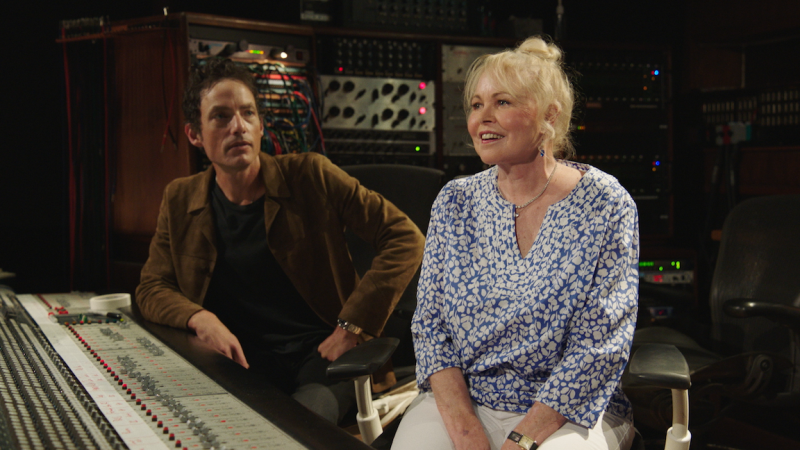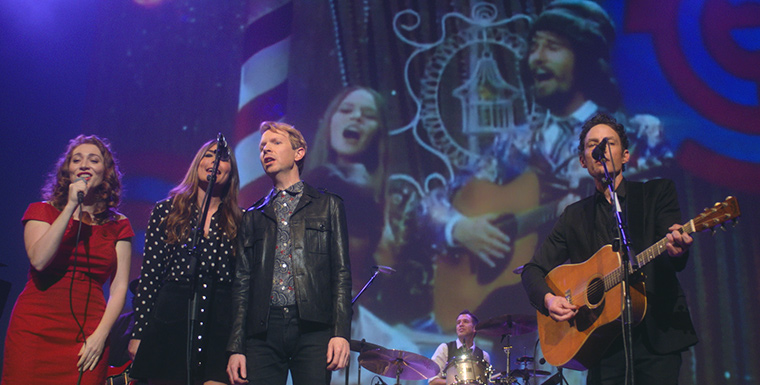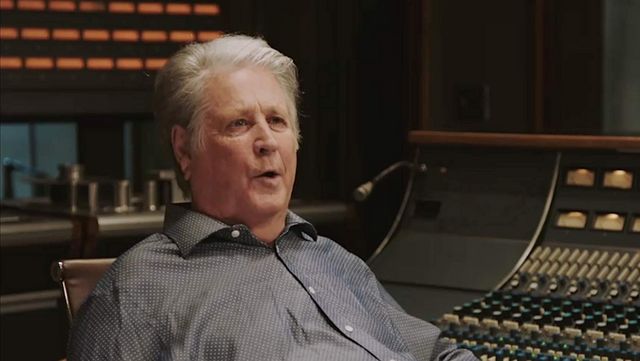Echo in the Canyon review – California droopin' | reviews, news & interviews
Echo in the Canyon review – California droopin'
Echo in the Canyon review – California droopin'
Disappointing tribute to the 1965-67 Laurel Canyon folk-rock scene

Echo in the Canyon is a lamentably thin documentary about the vibrant folk-rock music scene that flourished in the bohemian Los Angeles neighbourhood of Laurel Canyon from 1965 to 1967.
The singer-songwriter was born in 1969, the year in which Jacques Demy’s only American film Model Shop was released. Inspired by the mood of Demy’s semi-documentary love-letter to Los Angeles, Dylan and his manager Andrew Slater, a former boss of Capitol Records, mounted a show at the Orpheum Theater in downtown LA in 2015 to coincide with the fiftieth anniversary of the Byrds’ game-changing “Mr. Tambourine Man,” which was written, of course, by Dylan’s dad.
Backed by a solid band at the concert, Dylan led Fiona Apple, Beck, Cat Power, Regina Spektor, and Jade Castrinos (once of Edward Sharpe and the Magnetic Zeros) in performing faithful renditions – jingly guitars present and correct – of numbers by the above-mentioned groups and other Laurel Canyon scenesters like the Turtles and the Association. Stirring though the concert excerpts are, they’re no substitute for seeing the songs’ originators playing them in full. (Below: Spektor, Castrinos, Beck, and Dylan perform in front of a projected image of the Mamas and the Papas)
 Directed by Slater and executive-produced by Dylan, the movie is a cross-promotional plug for the accompanying soundtrack album, on which Dylan duets with his fellow concert stars on their cover versions, as well as with Neil Young and Norah Jones. Dylan interviewed David Crosby, Stephen Stills, and Graham Nash for the film, but Young only appears in Buffalo Springfield clips and a tantalizingly brief archival shot of him with Crosby, Stills, and Nash from CSNY’s heyday.
Directed by Slater and executive-produced by Dylan, the movie is a cross-promotional plug for the accompanying soundtrack album, on which Dylan duets with his fellow concert stars on their cover versions, as well as with Neil Young and Norah Jones. Dylan interviewed David Crosby, Stephen Stills, and Graham Nash for the film, but Young only appears in Buffalo Springfield clips and a tantalizingly brief archival shot of him with Crosby, Stills, and Nash from CSNY’s heyday.
Dylan also talked to Roger McGuinn, Brian Wilson, producer Lou Adler, Jackson Browne, John Sebastian, and two British outsiders who investigated Laurel Canyon, Eric Clapton (who was musically invested in the scene) and Ringo Starr (who remembers getting high). The late Tom Petty appears for no apparent reason and says nothing relatable. As an interlocutor, Dylan is mystifyingly detached, unable to respond meaningfully to the veterans’ reminiscences. He also elicits no passion for their music from Spektor, Beck, or Power in shots of the four sitting in a swanky LA house trying to think of things to say. (There's no rule that says musicians have to be articulate commentators on other people's work.)
Where – to cite Joni Mitchell – are “the ladies of the canyon”? Unforgivably, Dylan interviewed only one female musician. Michelle Phillips, the Mamas and the Papas’ last singer standing, doesn’t discuss the band’s vocal harmonies, but dwells on the affair she had with its tenor Denny Doherty despite being married at the time to its driving force and principle songwriter John Phillips. The film’s neglect of their colleague Cass Elliott, whose soulful singing exalted the Mamas and the Papas' sound and whose musical salons forged many a connection in Laurel Canyon, is criminal. Compounding this sexism is the unaccountable absence of Laurel Canyon-ites Mitchell and Carole King.
Other absentees include the Doors, Love (led by the visionary African-American singer-songwriter Arthur Lee), Frank Zappa, the Monkees, and the session band the Wrecking Crew. (Spirit, which wrote and performed the Model Shop soundtrack, and Canned Heat were Topanga Canyon groups). True, the Doors – rooted in the blues, not folk – don’t fit Echo in the Canyon’s remit, but the Beach Boys wasn't a folk-rock group and Buffalo Springfield barely was. (Below: Beach Boys maestro Brian Wilson)
 Since Echo in the Canyon is devoid of social context – the Vietnam War, the Summer of Love, the souring of the hippie dream – it’s at its best when the musicians talk music. Byrds frontman McGuinn engagingly describes how he was influenced by the Beatles’ use of folk chord progressions (but no one mentions that the Butterfield Blues Band and Bob Dylan’s performances at the 1965 Newport Folk Festival and the latter’s Bringing It All Back Home and Highway 61 Revisited LPs were crucial to the evolution of American electric folk).
Since Echo in the Canyon is devoid of social context – the Vietnam War, the Summer of Love, the souring of the hippie dream – it’s at its best when the musicians talk music. Byrds frontman McGuinn engagingly describes how he was influenced by the Beatles’ use of folk chord progressions (but no one mentions that the Butterfield Blues Band and Bob Dylan’s performances at the 1965 Newport Folk Festival and the latter’s Bringing It All Back Home and Highway 61 Revisited LPs were crucial to the evolution of American electric folk).
In the most exciting sequence, Stills recalls how he met Judy Collins and Clapton on the same night – when Clapton's group Cream played at the Whisky a Go Go – and afterwards borrowed chords from Collins’s “Since You’ve Asked” (they’d become romantically involved) for his Buffalo Springfield song “Questions.” He played it to Clapton, whom Crosby had brought to Stills’s Laurel Canyon house, as he was writing it.
Remembering hearing the song for the first time 47 years later, Clapton tells Dylan, “I must have copped it and not even known it” when he was writing “Let it Rain”. Stills, in LA, and Clapton, in London, are next juxtaposed trading riffs from “Questions”’ concluding guitar solo. It’s a rare moment of magic in a film that could have burst with it had it focused entirely on these great musicians' convergence and chemistry rather than on Dylan – but then it wouldn’t have existed.
rating
Share this article
Add comment
The future of Arts Journalism
You can stop theartsdesk.com closing!
We urgently need financing to survive. Our fundraising drive has thus far raised £49,000 but we need to reach £100,000 or we will be forced to close. Please contribute here: https://gofund.me/c3f6033d
And if you can forward this information to anyone who might assist, we’d be grateful.

Subscribe to theartsdesk.com
Thank you for continuing to read our work on theartsdesk.com. For unlimited access to every article in its entirety, including our archive of more than 15,000 pieces, we're asking for £5 per month or £40 per year. We feel it's a very good deal, and hope you do too.
To take a subscription now simply click here.
And if you're looking for that extra gift for a friend or family member, why not treat them to a theartsdesk.com gift subscription?
more Film
 Anemone review - searching for Daniel Day-Lewis
The actor resurfaces in a moody, assured film about a man lost in a wood
Anemone review - searching for Daniel Day-Lewis
The actor resurfaces in a moody, assured film about a man lost in a wood
 Train Dreams review - one man's odyssey into the American Century
Clint Bentley creates a mini history of cultural change through the life of a logger in Idaho
Train Dreams review - one man's odyssey into the American Century
Clint Bentley creates a mini history of cultural change through the life of a logger in Idaho
 Palestine 36 review - memories of a nation
Director Annemarie Jacir draws timely lessons from a forgotten Arab revolt
Palestine 36 review - memories of a nation
Director Annemarie Jacir draws timely lessons from a forgotten Arab revolt
 Relay review - the method man
Riz Ahmed and Lily James soulfully connect in a sly, lean corporate whistleblowing thriller
Relay review - the method man
Riz Ahmed and Lily James soulfully connect in a sly, lean corporate whistleblowing thriller
 Die My Love review - good lovin' gone bad
A magnetic Jennifer Lawrence dominates Lynne Ramsay's dark psychological drama
Die My Love review - good lovin' gone bad
A magnetic Jennifer Lawrence dominates Lynne Ramsay's dark psychological drama
 Bugonia review - Yorgos Lanthimos on aliens, bees and conspiracy theories
Emma Stone and Jesse Plemons excel in a marvellously deranged black comedy
Bugonia review - Yorgos Lanthimos on aliens, bees and conspiracy theories
Emma Stone and Jesse Plemons excel in a marvellously deranged black comedy
 theartsdesk Q&A: director Kelly Reichardt on 'The Mastermind' and reliving the 1970s
The independent filmmaker discusses her intimate heist movie
theartsdesk Q&A: director Kelly Reichardt on 'The Mastermind' and reliving the 1970s
The independent filmmaker discusses her intimate heist movie
 Blu-ray: Wendy and Lucy
Down-and-out in rural Oregon: Kelly Reichardt's third feature packs a huge punch
Blu-ray: Wendy and Lucy
Down-and-out in rural Oregon: Kelly Reichardt's third feature packs a huge punch
 The Mastermind review - another slim but nourishing slice of Americana from Kelly Reichardt
Josh O'Connor is perfect casting as a cocky middle-class American adrift in the 1970s
The Mastermind review - another slim but nourishing slice of Americana from Kelly Reichardt
Josh O'Connor is perfect casting as a cocky middle-class American adrift in the 1970s
 Springsteen: Deliver Me From Nowhere review - the story of the Boss who isn't boss of his own head
A brooding trip on the Bruce Springsteen highway of hard knocks
Springsteen: Deliver Me From Nowhere review - the story of the Boss who isn't boss of his own head
A brooding trip on the Bruce Springsteen highway of hard knocks
 The Perfect Neighbor, Netflix review - Florida found-footage documentary is a harrowing watch
Sundance winner chronicles a death that should have been prevented
The Perfect Neighbor, Netflix review - Florida found-footage documentary is a harrowing watch
Sundance winner chronicles a death that should have been prevented
 Blu-ray: Le Quai des Brumes
Love twinkles in the gloom of Marcel Carné’s fogbound French poetic realist classic
Blu-ray: Le Quai des Brumes
Love twinkles in the gloom of Marcel Carné’s fogbound French poetic realist classic

Comments
Much more authoritative and
Great review. I didn't even